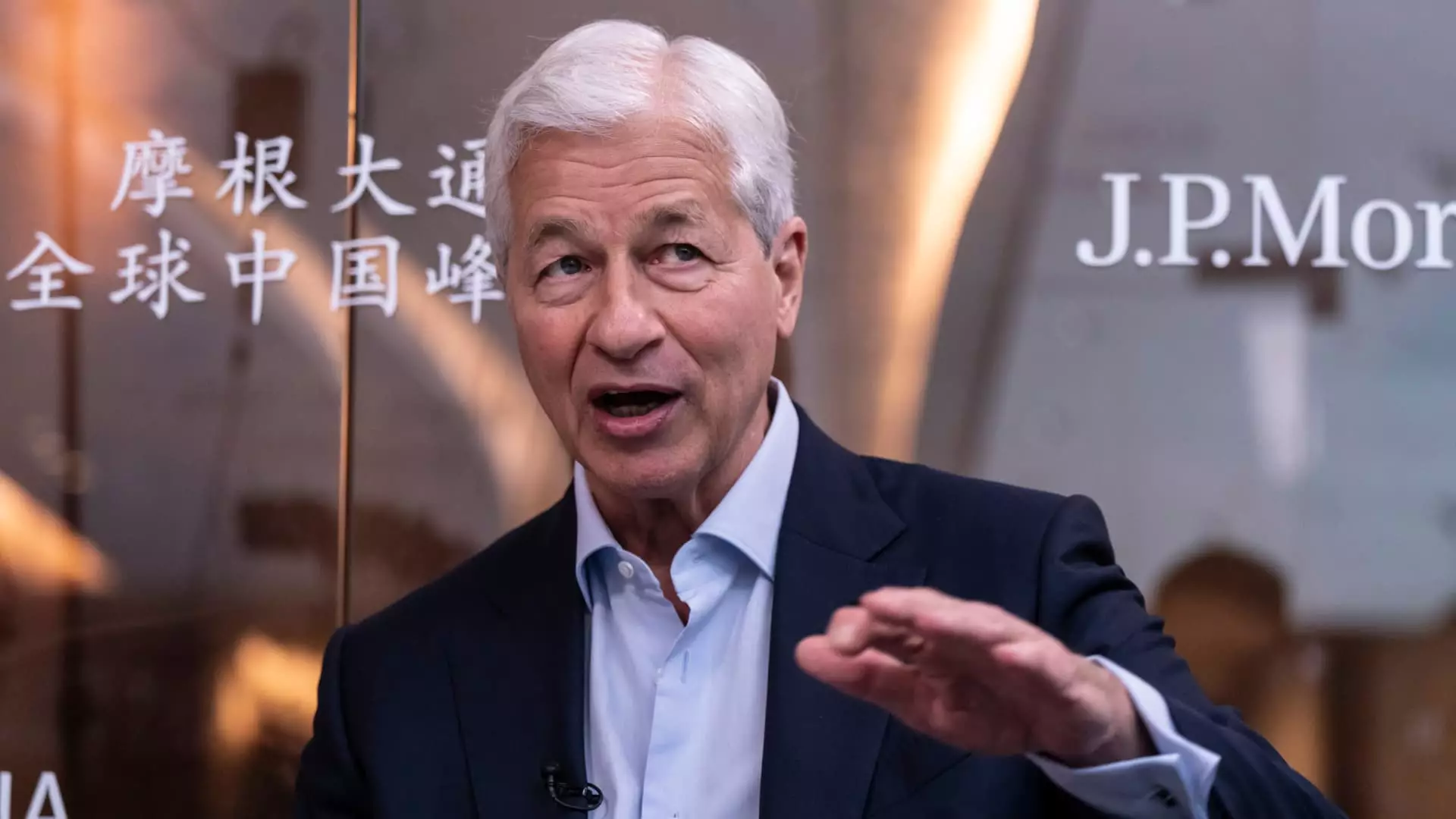As the second-quarter earnings season looms, many investors hold their breath, hoping for signs of resilience in a turbulent financial landscape. The anticipated 4.8% increase in S&P 500 earnings, as forecasted by FactSet, hints at a modest recovery. Yet, beneath this veneer of optimism lurks a more unsettling truth: a fragile economy teetering on the edge of stagnation. Major corporations, especially the banking giants, are facing contradictory signals. On one hand, they boast stable revenues and strategic shifts—like JPMorgan Chase’s focus on expense management—and on the other, they warn of “considerable turbulence” ahead. These mixed messages cast doubt on the narrative of steady growth, revealing that the current market rally may be driven more by hope than by fundamental strength.
This earnings season serves as a mirror reflecting the dissonance within the US economy. The financial sector, traditionally a barometer of economic health, is displaying a peculiar pattern: consistent beats on earnings estimates have become the norm, yet the overall profitability is subdued. For instance, JPMorgan’s recent stellar streak in surpassing analyst expectations masks the reality that profit margins are under pressure from a combination of rising expenses and potential rate cuts. The optimism that often surrounds earnings reports does little to mask the deeper vulnerabilities—volatile interest rates, international trade tensions, and uncertain consumer spending patterns—that threaten the sustainability of this moderate growth.
The Banking Sector: A Cautionary Tale of Surface-Level Success
Within this earnings landscape, the banking sector embodies a paradox. Big banks like JPMorgan, Wells Fargo, and Citigroup are reporting results that seem positive on the surface but reveal underlying fragility. JPMorgan, with its history of beating estimates over multiple quarters, is preparing for a potentially sharper decline in earnings caused by external headwinds such as Fed rate cuts. While analysts like Ebrahim Poonawala suggest that JPM might still deliver “solid” results, the market is increasingly aware of the brewing storm: tighter monetary policy, shrinking net interest margins, and the threat of recessionary pressures.
Wells Fargo’s flat revenue, despite its recent asset cap removal and asset management shifts, underscores how even the most seemingly resilient banks are vulnerable to macroeconomic shifts. The slight downgrades and cautious outlooks from analysts reflect a sober acknowledgment: the sector’s previous strength was often built on short-term factors, not a sustainable economic foundation. Citigroup, which has outperforming stock gains, might be at risk if the broader economic climate turns worse. Its reliance on capital markets and trading revenue means it remains susceptible to fluctuations in global financial markets and geopolitical uncertainties.
The narrative that these banks are weathering the storm comfortably is misleading. Their historical ability to beat earnings estimates doesn’t guarantee future prosperity, especially when external factors—such as inflationary pressures, regulatory changes, and international tariffs—remain unpredictable and potentially disruptive. The risk is that a false sense of security may cause investors to overlook the seeds of future instability embedded within these earnings reports.
Tech and Consumer Giants: A Fragile Recovery Masked by Optimism
Turning to industries less tied to monetary policy, the technology sector exemplifies the overconfidence of the current market narrative. Netflix’s upcoming earnings are viewed through an optimistic lens, with expectations of a 45% revenue increase. Yet, this projected growth comes amid an environment of intensified competition, technological shifts, and uncertain consumer confidence. The recent rally in streaming services may be more reflective of investor enthusiasm than genuine, sustainable growth.
Similarly, the pharma giant Johnson & Johnson stands at a crossroads. Tariffs and trade tensions threaten to disrupt their supply chains and profit margins just as they prepare to report declining earnings. The looming threat of tariffs, especially the potential 200% levy on imported pharmaceuticals, exposes how vulnerable even the most stable blue-chip firms are to geopolitical maneuvers. The optimistic earnings beats in recent quarters often overlooked these risks, reinforcing the flawed assumption that corporate performance is insulated from global uncertainties.
In the financial sector, Morgan Stanley and Goldman Sachs display resilience with expected earnings growth, buoyed by booming markets and increased trading activity. Yet, these gains may be ephemeral if inflation persists or if economic growth falters. Their strong performance showcases how financial markets have become increasingly detached from mainstream economic realities—driven more by liquidity injections and investor speculation than actual economic strength.
The Danger of Overconfidence in a Troubled Economy
The overarching issue with this earnings season is its tendency to mask the deeper malaise. While corporations appear to be resilient, their apparent success is often built on short-term tailwinds—low interest rates, fiscal stimulus, and market euphoria. These factors, however, are not sustainable. The widespread optimism, especially among passive investors and market bulls, risks blinding stakeholders to the signs of an impending correction.
This disconnect between financial markets and the economic fundamentals resonates with a broader political reality. Center-wing liberal policies often advocate for prudent regulation, investment in social infrastructure, and cautious monetary policy—measures that could buffer against the impending fallout. Instead, the current environment is characterized by a laissez-faire attitude, where the illusion of stability persists despite glaring vulnerabilities beneath the surface. Over-reliance on corporate earnings beats, record market valuations, and quantitative easing can foster complacency that leads to devastating corrections once the underlying cracks widen.
In essence, the upcoming earnings reports will not tell the whole story. Instead, they risk reinforcing a dangerous narrative—that economic and corporate health are invincible—when in fact, both are fragile and subject to swift change. The market’s current buoyancy might well be a house


Leave a Reply